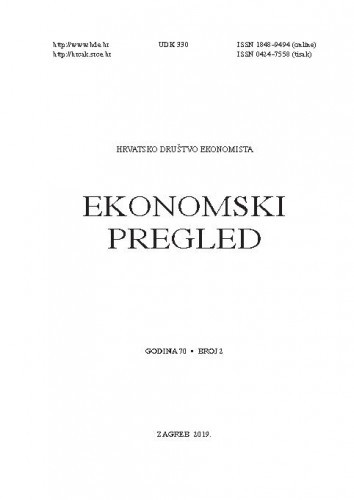The aim of this study is to investigate the differential impacts of business, government and higher education sectors’ research and development expenditures (R&D) on innovation in OECD countries. Although the business sector has the largest share of the R&D sector due to its profit motive, there are also some efforts made by public and higher education sectors. On the other hand, for decades, the literature of economics is in doubt about the efficiency of the public sector. The study deals with the issue by making a panel data analysis covering 18 OECD countries over the 1981-2016 period and aims to examine the separated effects of these sectoral R&D expenditures on innovation performance. Since most of the existing literature mostly focused on the R&D-GDP relationship, the present study aims to contribute to a relatively untouched point. To obtain robust findings, recent econometric tests and estimators have been used. The previous studies in the existing literature ignored the possibility of cross-sectional dependence problem within the country samples. Ignoring this problem may yield biased and inconsistent results. The present study considers the existence of cross-sectional dependence between selected countries and checks the robustness of each test and estimator via recent econometric techniques. The findings reveal firstly that there is a cointegrating relationship between the number of domestic patents (innovation) and the other three R&D indicators. Secondly, the longrun estimation results imply that increases in the R&D expenditures made by business sector significantly raise innovation while there is no statistically significant evidence on the impact of R&D expenditures made by the government and higher education sectors. The findings reveal that the R&D efforts made by the government and higher education sectors cannot turn into innovation and do not contribute to the knowledge spillover mechanism.; Cilj ovog rada je istražiti diferencijalne utjecaje ulaganja u istraživanje i razvoj u sektorima gospodarstva, vlade i visokog obrazovanja na inovacije u zemljama OECD-a. Iako poslovni sektor ima najveći udio u području istraživanja i razvoja zbog profitnih interesa, također postoje i napori javnog sektora i visokog obrazovanja. S druge strane, ekonomska literatura desetljećima sumnja u učinkovitost javnog sektora. Istraživanje se bavi izradom panel analize podataka koja obuhvaća 18 zemalja OECD-a tijekom razdoblja od 1981. do 2016. godine i ima za cilj ispitati odvojene učinke ovih sektorskih izdataka za istraživanje i razvoj na inovacijske performanse. Budući da je većina postojeće literature uglavnom usmjerena na odnos istraživanja i razvoja i BDP-a, ova studija ima za cilj pridonijeti relativno neistraženoj temi. Kako bi se dobili čvrsti nalazi, korištena su recentna ekonometrijska testiranja i procjene. Prethodne studije u postojećoj literaturi ignorirale su mogućnost problema međusektorske ovisnosti u uzorcima zemlje. Zanemarivanje ovog problema može dovesti do pristranih i nedosljednih rezultata. Ova studija polazi od pretpostavke o međusektorskoj ovisnosti između odabranih zemalja i analizira robusnost svakog testa i procjenitelja putem recentnih ekonometrijskih tehnika. Rezultati otkrivaju prvo kako postoji kointegracijski odnos između broja domaćih patenata (inovacija) i ostalih triju pokazatelja istraživanja i razvoja. Drugo, dugoročni rezultati procjene ukazuju na to da povećanje izdataka za istraživanje i razvoj u poslovnom sektoru značajno povećava inovacije, dok ne postoje statistički značajni dokazi o utjecaju izdataka za istraživanje i razvoj od strane vlade i sektora visokog obrazovanja. Rezultati ukazuju kako se napori vlade i sektora visokog obrazovanja vezano uz istraživanje i razvoj ne mogu pretvoriti u inovacije i ne doprinose mehanizmu pre
Sažetak

 Ekonomski pregled : mjesečnik Hrvatskog društva ekonomista : 70,2(2019) / glavni i odgovorni urednik Dragomir Vojnić.
Ekonomski pregled : mjesečnik Hrvatskog društva ekonomista : 70,2(2019) / glavni i odgovorni urednik Dragomir Vojnić.